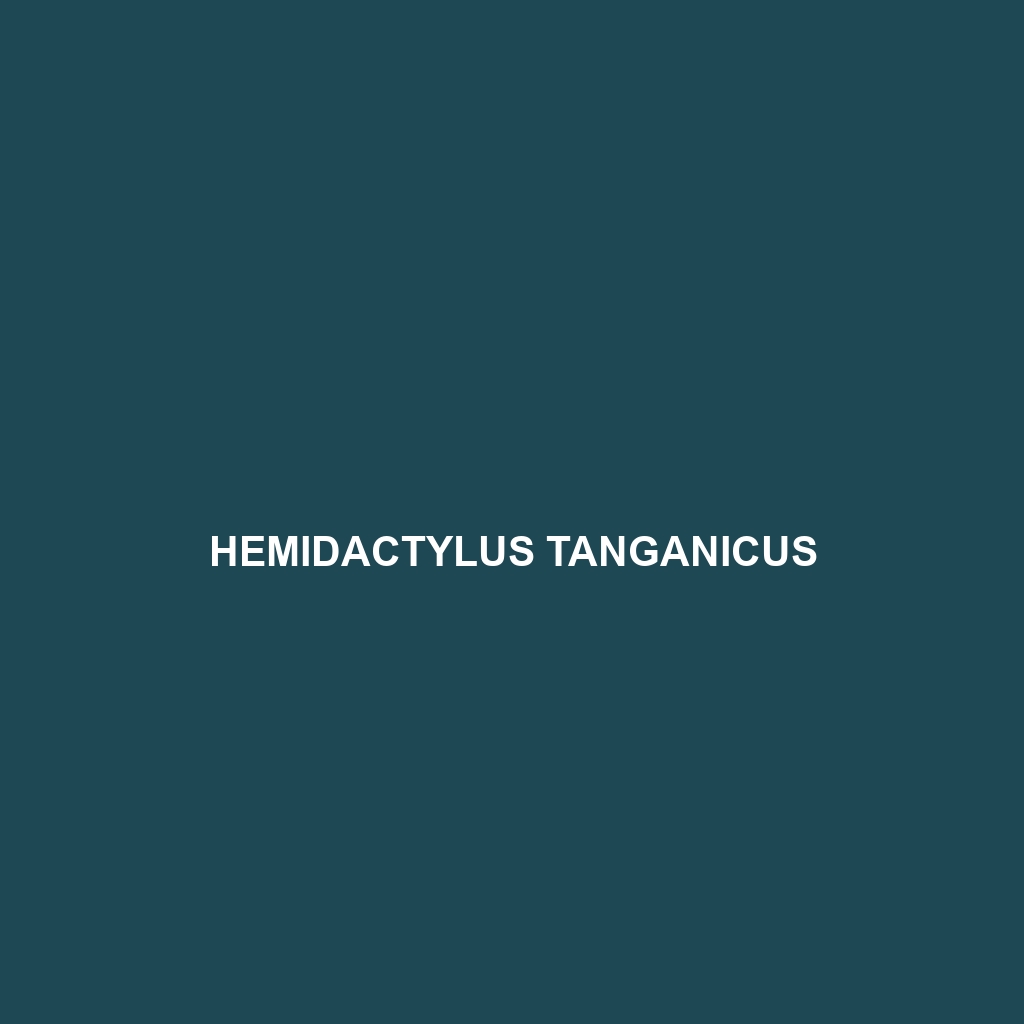Common Name
Hemidactylus tanganicus
Scientific Name
Hemidactylus tanganicus
Habitat
Hemidactylus tanganicus, also known as the Tanganika gecko, is primarily found in the humid and warm regions of East Africa, particularly near the shores of Lake Tanganyika. This species thrives in diverse habitats, including tropical rainforests, savannas, and rocky outcrops, typically at altitudes ranging from lowland areas up to approximately 1,500 meters. The climate in these regions is characterized by high humidity and moderate temperatures, which are optimal for the survival of this species. Geologically, the rocky crevices and trees provide essential nesting and basking sites, making these environments crucial for the gecko’s lifestyle.
Physical Characteristics
Hemidactylus tanganicus displays a compact body, typically ranging from 10 to 15 centimeters in length. Its coloration varies from light tan to dark brown, often with intricate patterns and markings that provide effective camouflage against rocky backdrops. The skin of the Tanganika gecko is slightly granular, enhancing its grip on surfaces. A distinctive feature includes its large eyes which are adapted for its nocturnal lifestyle, providing excellent night vision. The toes of Hemidactylus tanganicus are equipped with adhesive pads, enabling it to climb smoothly across various surfaces, a key adaptation in its arboreal and terrestrial habitats.
Behavior
This species is predominantly nocturnal, meaning it is most active at night. During the day, Hemidactylus tanganicus often seeks shelter in crevices, under stones, or within tree bark to avoid predators. It exhibits a territorial nature, often engaging in displays of dominance against intruders within their defined home range. Mating rituals occur during the rainy season, where males perform courtship displays, including head bobbing and tail waving, to attract females. Their social interactions are primarily based on territory establishment and mating dynamics, making them an interesting subject for behavioral studies.
Diet
The diet of Hemidactylus tanganicus is primarily insectivorous, featuring a wide variety of prey that includes crickets, beetles, and other small invertebrates. They are opportunistic feeders, which means they will also consume other small creatures when the opportunity arises, displaying omnivorous tendencies. Feeding occurs predominantly at night when they hunt voraciously, utilizing their keen eyesight and swift reflexes to catch prey. This dietary pattern plays a critical role in controlling insect populations in their habitat, showcasing their ecological importance.
Reproduction
Reproductive activity in Hemidactylus tanganicus typically peaks during the rainy season, indicating a strategy to coincide offspring development with favorable environmental conditions. Females usually lay two eggs per clutch, which are deposited in moist, sheltered areas such as leaf litter or crevices. The incubation period lasts approximately 60 days, after which hatchlings emerge, measuring around 5 centimeters long. Parental care is minimal, with hatchlings being independent from birth; however, the moisture-rich environment is critical for their survival during the juvenile stages. This reproductive strategy highlights the gecko’s adaptation to its ecological niche.
Conservation Status
Currently, Hemidactylus tanganicus is classified as of Least Concern by the International Union for Conservation of Nature (IUCN). However, habitat destruction resulting from agricultural expansion, deforestation, and climate change poses potential threats to its populations. Conservation efforts are focused on habitat preservation, ensuring that these unique ecosystems remain intact for future generations of this species. Awareness campaigns aimed at local communities to emphasize the gecko’s ecological role can play an essential part in conservation strategies.
Interesting Facts
One of the most fascinating aspects of Hemidactylus tanganicus is its ability to climb smooth surfaces thanks to its specialized toe pads that function like suction cups. This allows the gecko to escape predators quickly and access food sources high in vegetation. Additionally, like many geckos, it exhibits autotomy, where it can shed its tail to escape predation—a remarkable survival strategy. The regeneration of the tail can take several months, demonstrating a fascinating aspect of its biological resilience.
Role in Ecosystem
Hemidactylus tanganicus plays a vital role in its ecosystem as both a predator and prey. As an insectivore, it helps control populations of pests, contributing to ecological balance. Additionally, it serves as a food source for various predators, including birds and larger reptiles, forming a crucial link in the food web. Through these interactions, Hemidactylus tanganicus helps maintain the health of its ecosystem, signifying the intricate connections between species in the habitat.
